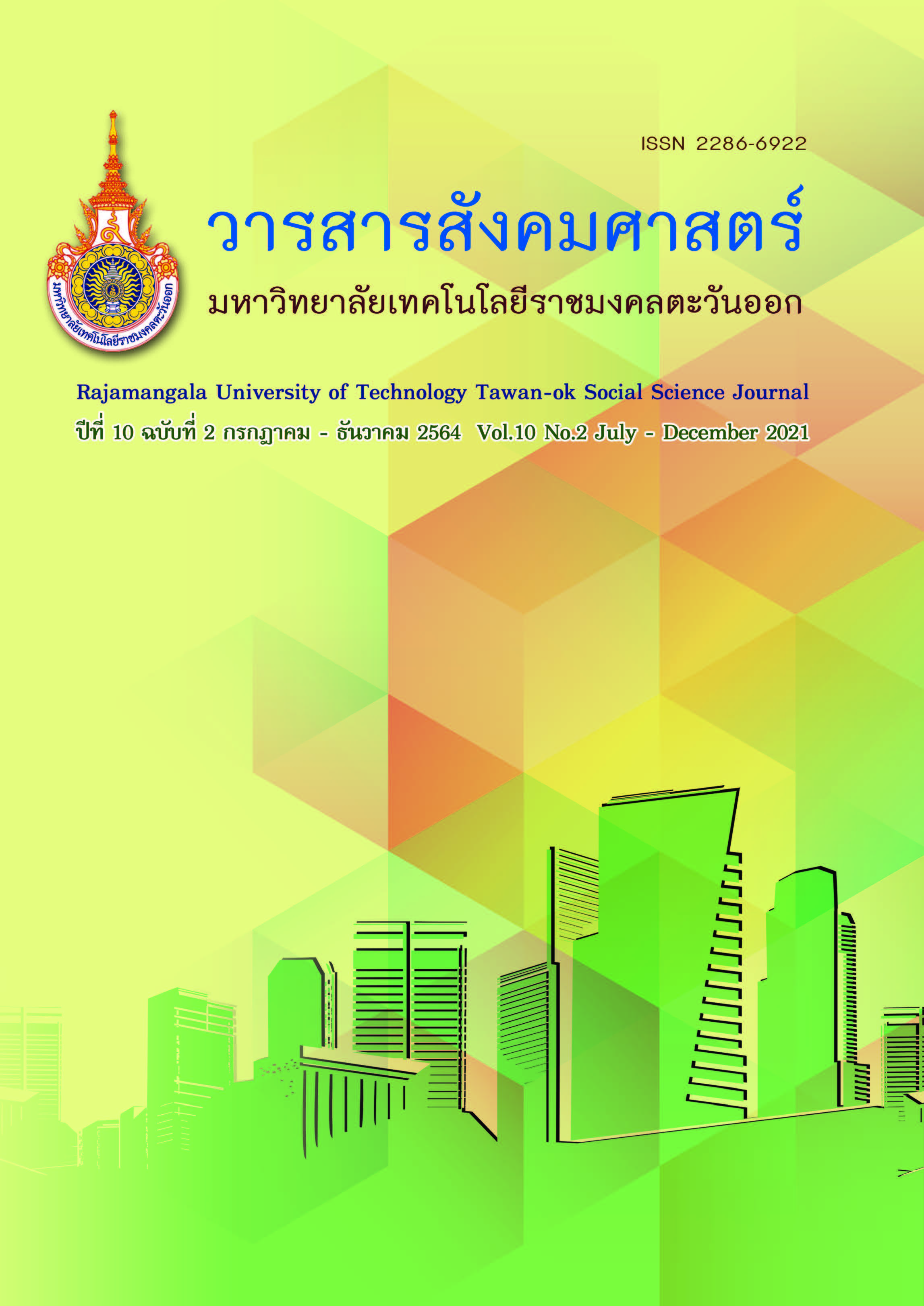Development of Financial Health Model for Teachers According to Sufficiency Economy
Main Article Content
Abstract
This research aims to study and compare the financial health of teachers. Study and
compare the economic behavior of teachers. Analyze the relationship between financial health and
teacher economic behavior. And to predict the behavior of economic application of teachers. A total
of 1,078 samples were obtained by multi-stage sampling. The instrument used to collect data was
a questionnaire. Statistics used in data analysis include: Frequency, percentage, mean, standard
deviation Testing the value of One-way analysis of variance Correlation analysis and multiple level And the behavior of applying sufficiency economy. Very high 2) Teachers with gender, age, age,
education, and position are financially sound. There was a statistically significant difference at .05
level. not different 3) Teachers with different sex, age, education, and position had different behaviors
of sufficiency economy as a whole at the .05 level. The application of sufficiency economy as a whole
was no different. 4) The relationship between the financial health of teachers and the sufficiency
economy of teachers. There was a low level of correlation between the financial health of the
teachers and their relationship with sufficiency economy. (2) Debt conditions (3) Availability 5) Predict
the behavior of the sufficiency economy of the teacher = 2.994 + 0.139 (sex) + 0.075 (age) - 0.047
(affiliation) +0.206 (availability of supplies)
regression analysis. The research found that 1) The teacher is financially healthy. At the moderate
Article Details
References
เกรียงศักดิ์ เจริญวงศ์ศักดิ์. 2547. หาเงินใช้เงิน กลยุทธ์การเล่นกับเงินอย่างผู้ชนะ. กรุงเทพฯ : บริษัท ซัคเซส มีเดีย จำกัด.
เฉลิมศรี ชุมเกษียณ. 2550. การดำเนินชีวิตตามหลักเศรษฐกิจพอเพียงกับภาวการณ์เป็นหนี้สินของข้าราชการทหารสังกัดกองทัพเรือในเขตกรุงเทพมหานคร. วิทยานิพนธ์ มหาวิทยาลัยบูรพา.
ฌานิฎา ศรีสุทธิชัยสกุล. 2550. ทัศนะของพัฒนาการอำเภอต่อการนำปรัชญาเศรษฐกิจพอเพียงไปสู่การแก้ปัญหาความยากจน : กรณีศึกษากรมการพัฒนาชุมชน. ภาคนิพนธ์ปริญญามหาบัณฑิต สถาบันบัณฑิตพัฒนบริหารศาสตร์.
นพพร เมธีอนันต์กุล. 2549. การนำแนวปฏิบัติตามปรัชญาของเศรษฐกิจพอเพียงไปใช้ในการดำเนินชีวิตกรณีศึกษาเกษตรกร ลูกค้า ธ.ก.ส. อำเภอวิเชียรบุรี จังหวัดเพชรบูรณ์. วิทยานิพนธ์ สถาบันบัณฑิตพัฒนบริหารศาสตร์.
สำนักงานคณะกรรมการพัฒนาการเศรษฐกิจและสังคมแห่งชาติ. 2561. ปรัชญาเศรษฐกิจพอเพียง. (ออนไลน์)Available : http//www.nesdb.go.th.
อัจฉรา โยมสินธุ์. 2558. วิจัยเชิงพัฒนาชีวิตสมดุลของครูพอเพียงแบบอย่าง. (ออนไลน์) Available : http//www.youtube.com.
อัจฉรา ราชแก้ว. 2550. การนำปรัชญาเศรษฐกิจพอเพียงไปปรับใช้ในการดำเนินชีวิตของพนักงานขับรถโดยสารประจำทางจังหวัดปทุมธานี. วิทยานิพนธ์ สถาบันบัณฑิตพัฒนบริหารศาสตร์.
อำนวย ปาอ้าย. 2559. ภาวะหนี้สินและการจัดการการเงินของผู้สูงอายุในประเทศไทย. คณะวิทยาการจัดการมหาวิทยาลัยราชภัฏราชนคินทร์.
Naresh k. Malholtra. 1996. Marketing Research and Applied. New Jersey : Prentice Hall.


